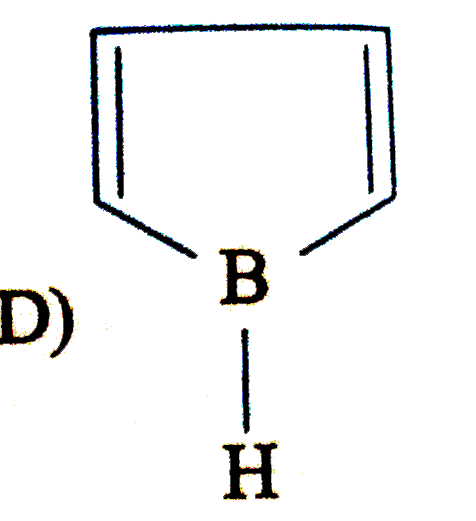How many of the following are heterocyclic aromatic compounds ?
benzene, cyclopentadiene, oxirane, tetrahydrofuran, naphthalene, cyclopentane, tropolone, azulene, diphenyl.
The correct Answer is:0
To determine how many of the given compounds are heterocyclic aromatic compounds, we need to analyze each compound based on the definitions of heterocyclic and aromatic compounds.
1. Benzene:
- Benzene is a cyclic compound consisting only of carbon atoms.
- It is aromatic due to its planar structure and the delocalization of 6 π electrons (follows Huckel's rule).
- Conclusion: Not heterocyclic (homocyclic).
2. Cyclopentadiene:
- Cyclopentadiene is a five-membered ring with two double bonds.
- It is not planar due to sp³ hybridization of one of the carbons, and it does not have delocalized π electrons.
- Conclusion: Not aromatic and not heterocyclic.
3. Oxirane:
- Oxirane (ethylene oxide) is a three-membered ring containing one oxygen atom.
- It is not aromatic because it does not have delocalized π electrons.
- Conclusion: Heterocyclic but not aromatic.
4. Tetrahydrofuran:
- Tetrahydrofuran is a five-membered ring with one oxygen atom.
- It is not aromatic because it does not have delocalized π electrons.
- Conclusion: Heterocyclic but not aromatic.
5. Naphthalene:
- Naphthalene consists of two fused benzene rings.
- It is aromatic due to delocalized π electrons (10 π electrons).
- Conclusion: Not heterocyclic (homocyclic).
6. Cyclopentane:
- Cyclopentane is a five-membered ring consisting only of carbon atoms.
- It is not aromatic because it is not planar and does not have delocalized π electrons.
- Conclusion: Not heterocyclic (homocyclic).
7. Tropolone:
- Tropolone has a seven-membered ring with one oxygen atom and three double bonds.
- It is aromatic due to the delocalization of π electrons (6 π electrons).
- Conclusion: Not heterocyclic (homocyclic).
8. Azulene:
- Azulene consists of two fused rings (5-membered and 7-membered) and has a total of 10 π electrons.
- It is aromatic due to delocalization.
- Conclusion: Not heterocyclic (homocyclic).
9. Diphenyl:
- Diphenyl consists of two benzene rings.
- It is aromatic due to delocalized π electrons (12 π electrons).
- Conclusion: Not heterocyclic (homocyclic).
Summary of Findings:
- Heterocyclic aromatic compounds found: 0
- Compounds that are heterocyclic but not aromatic: Oxirane, Tetrahydrofuran (2 total)
- Compounds that are neither heterocyclic nor aromatic: Benzene, Cyclopentadiene, Naphthalene, Cyclopentane, Tropolone, Azulene, Diphenyl (7 total)
Final Answer:
Total number of heterocyclic aromatic compounds: 0
- Benzene is a cyclic compound consisting only of carbon atoms.
- It is aromatic due to its planar structure and the delocalization of 6 π electrons (follows Huckel's rule).
- Conclusion: Not heterocyclic (homocyclic).
- Cyclopentadiene is a five-membered ring with two double bonds.
- It is not planar due to sp³ hybridization of one of the carbons, and it does not have delocalized π electrons.
- Conclusion: Not aromatic and not heterocyclic.
- Oxirane (ethylene oxide) is a three-membered ring containing one oxygen atom.
- It is not aromatic because it does not have delocalized π electrons.
- Conclusion: Heterocyclic but not aromatic.
- Tetrahydrofuran is a five-membered ring with one oxygen atom.
- It is not aromatic because it does not have delocalized π electrons.
- Conclusion: Heterocyclic but not aromatic.
- Naphthalene consists of two fused benzene rings.
- It is aromatic due to delocalized π electrons (10 π electrons).
- Conclusion: Not heterocyclic (homocyclic).
- Cyclopentane is a five-membered ring consisting only of carbon atoms.
- It is not aromatic because it is not planar and does not have delocalized π electrons.
- Conclusion: Not heterocyclic (homocyclic).
- Tropolone has a seven-membered ring with one oxygen atom and three double bonds.
- It is aromatic due to the delocalization of π electrons (6 π electrons).
- Conclusion: Not heterocyclic (homocyclic).
- Azulene consists of two fused rings (5-membered and 7-membered) and has a total of 10 π electrons.
- It is aromatic due to delocalization.
- Conclusion: Not heterocyclic (homocyclic).
- Diphenyl consists of two benzene rings.
- It is aromatic due to delocalized π electrons (12 π electrons).
- Conclusion: Not heterocyclic (homocyclic).
- Heterocyclic aromatic compounds found: 0
- Compounds that are heterocyclic but not aromatic: Oxirane, Tetrahydrofuran (2 total)
- Compounds that are neither heterocyclic nor aromatic: Benzene, Cyclopentadiene, Naphthalene, Cyclopentane, Tropolone, Azulene, Diphenyl (7 total)
Total number of heterocyclic aromatic compounds: 0
Topper's Solved these Questions
- BOOK - PRADEEPCHAPTER - ORGANIC CHEMISTRY-SOME BASIC PRINCIPLES TECHNIQUESEXERCISE - Competition Focus (Jee (Main and Advanced)/Medical Entrance) VII. Numerical Values Type Questions1videos
ORGANIC CHEMISTRY-SOME BASIC PRINCIPLES TECHNIQUES
- BOOK - PRADEEPCHAPTER - ORGANIC CHEMISTRY-SOME BASIC PRINCIPLES TECHNIQUESEXERCISE - Competition Focus (Jee (Main and Advanced)/Medical Entrance) VIII. Assertion-Reason Type Questions25videos
ORGANIC CHEMISTRY-SOME BASIC PRINCIPLES TECHNIQUES
- BOOK - PRADEEPCHAPTER - ORGANIC CHEMISTRY-SOME BASIC PRINCIPLES TECHNIQUESEXERCISE - Competition Focus (Jee (Main and Advanced)/Medical Entrance) V. Matrix-Match Type Questions1videos
ORGANIC CHEMISTRY-SOME BASIC PRINCIPLES TECHNIQUES
- BOOK - PRADEEPCHAPTER - HYDROGEN EXERCISE - COMPETITION FOCUS (Assertion-Reason Type Questions) Type 215videos
HYDROGEN
- BOOK - PRADEEPCHAPTER - P-BLOCK ELEMENTS (NITROGEN FAMILY)EXERCISE - Competition focus jee(main and advanced)/ medical entrance special) (VIII. Assertion-Reason Type Questions)10videos
P-BLOCK ELEMENTS (NITROGEN FAMILY)
Similar Questions
Knowledge Check
- Question 1 - Select One
Which one of the following is the heterocyclic aromatic compounds?
APyreneBThiopheneCPhenolDAniline - Question 2 - Select One
Which of the following is not a heterocyclic aromatic compound?
A(1) PyridineB(2) PyrrolidineC(3) PyrroleD(4) Furan - Question 3 - Select One or More
Which of the following heterocyclic compound/s might be aromatic?
A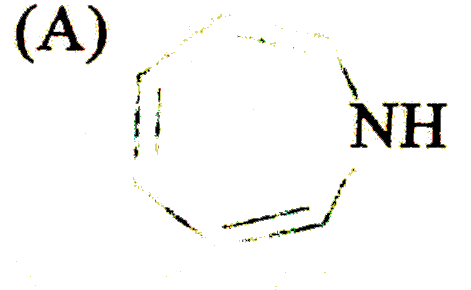 B
B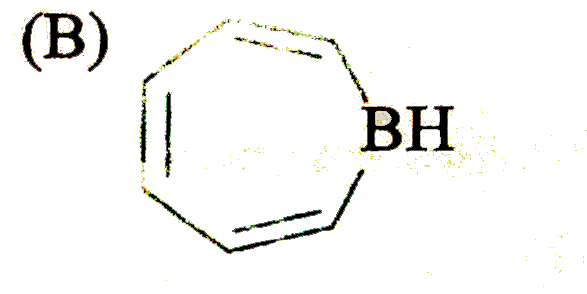 C
C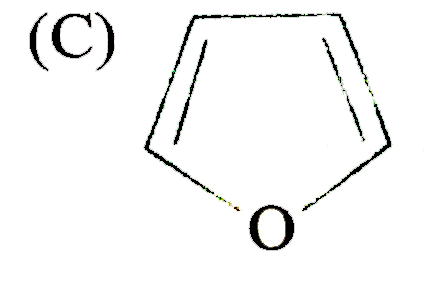 D
D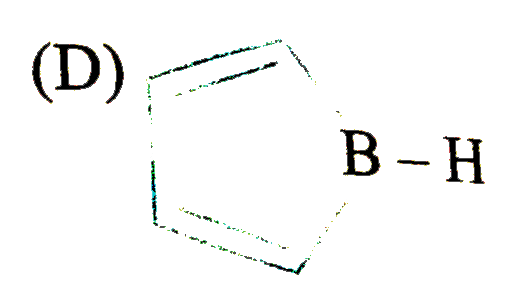
How many of the following compounds is/are aromatic ?
 View Solution
View SolutionHow many of the following compound are aromatic.
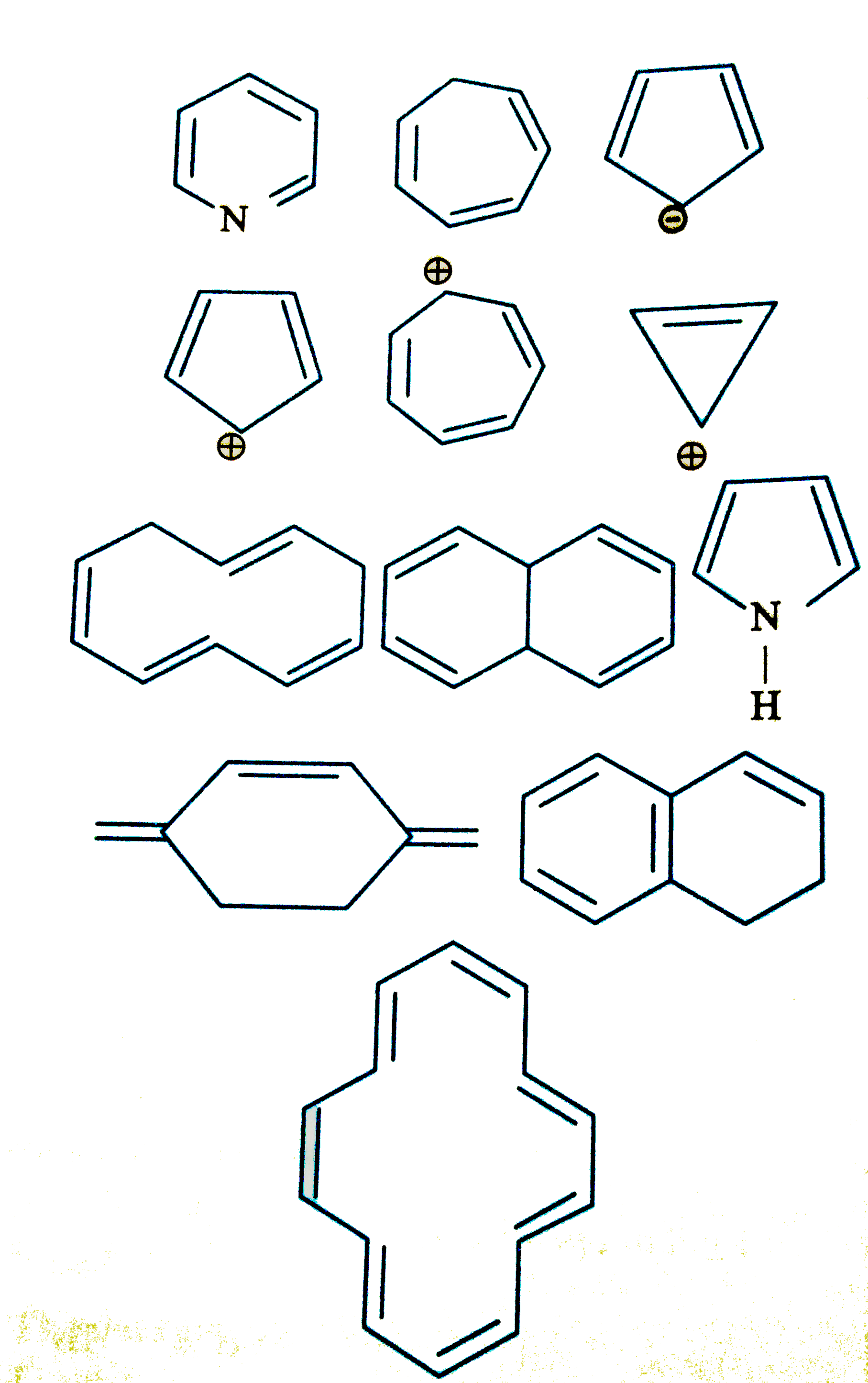 View Solution
View SolutionHow many of the following compounds are anhydrides?
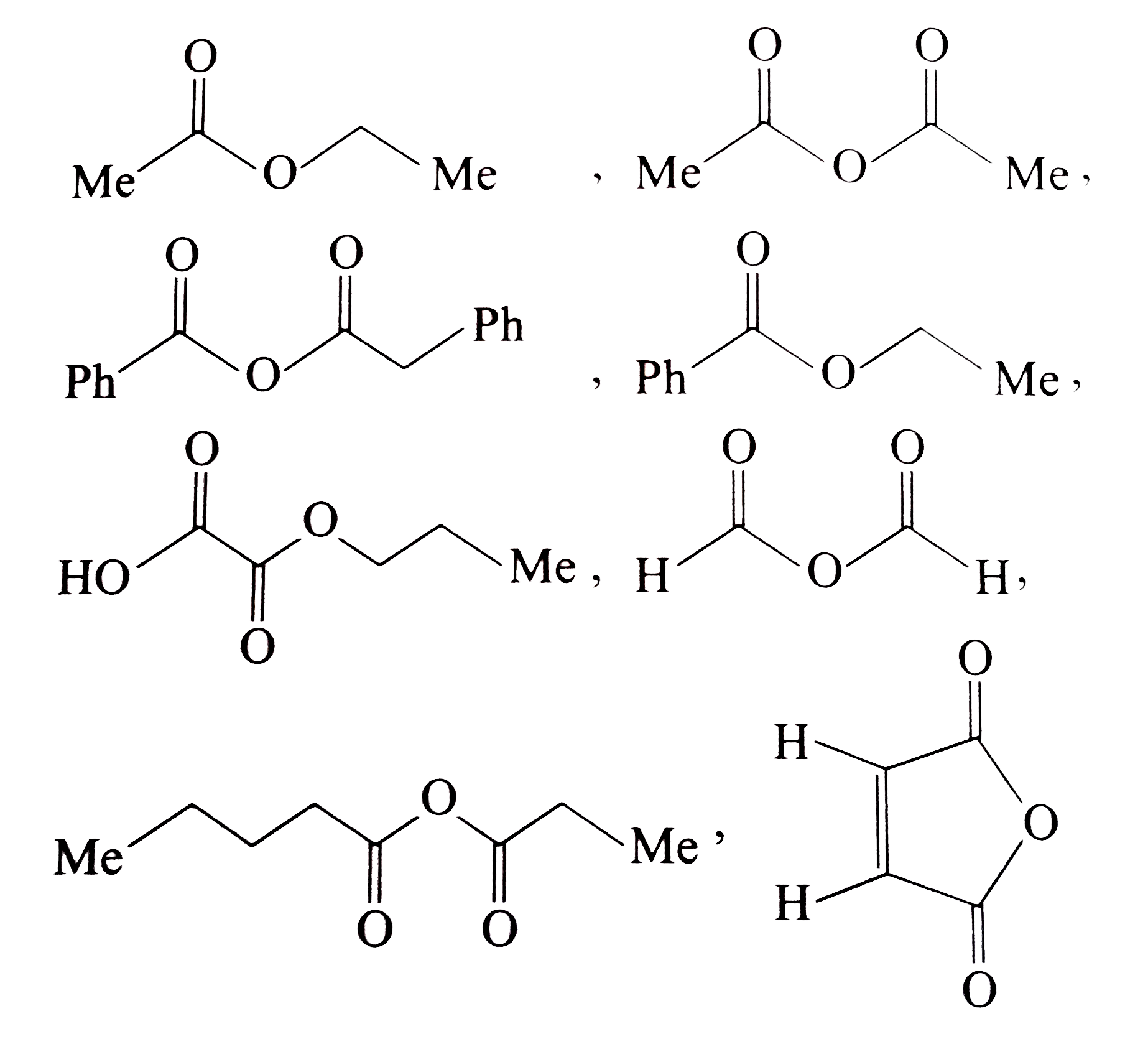 View Solution
View SolutionHow many of the following compounds show steroisomerism
 View Solution
View SolutionHow many structures (s) out of the following are aromatic : -
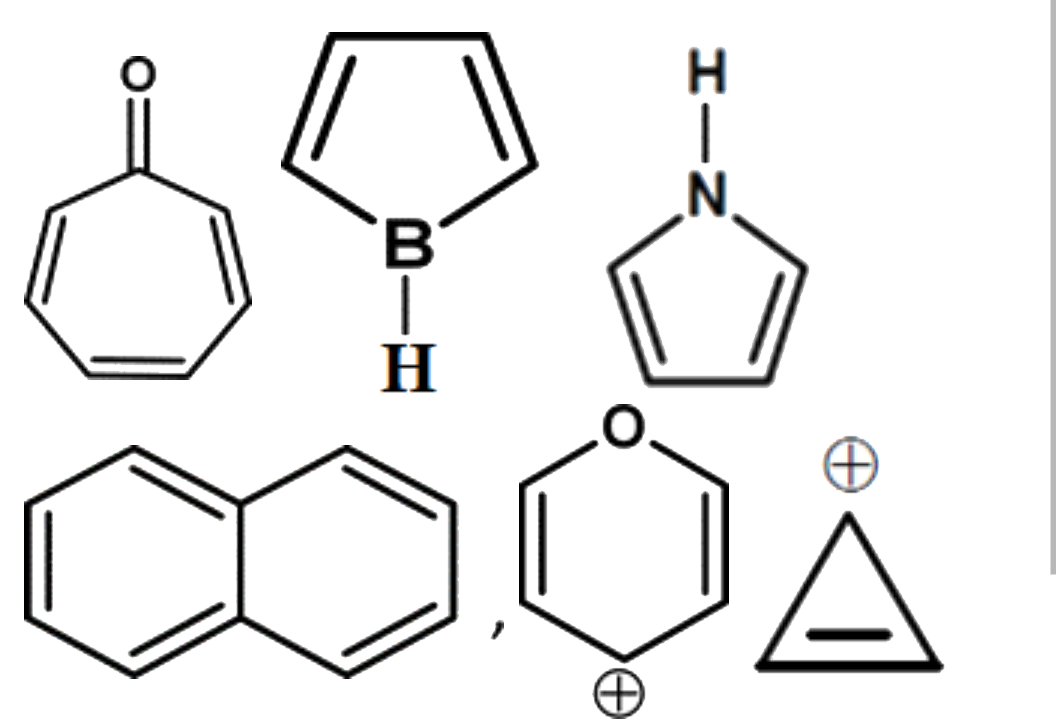 View Solution
View Solution



